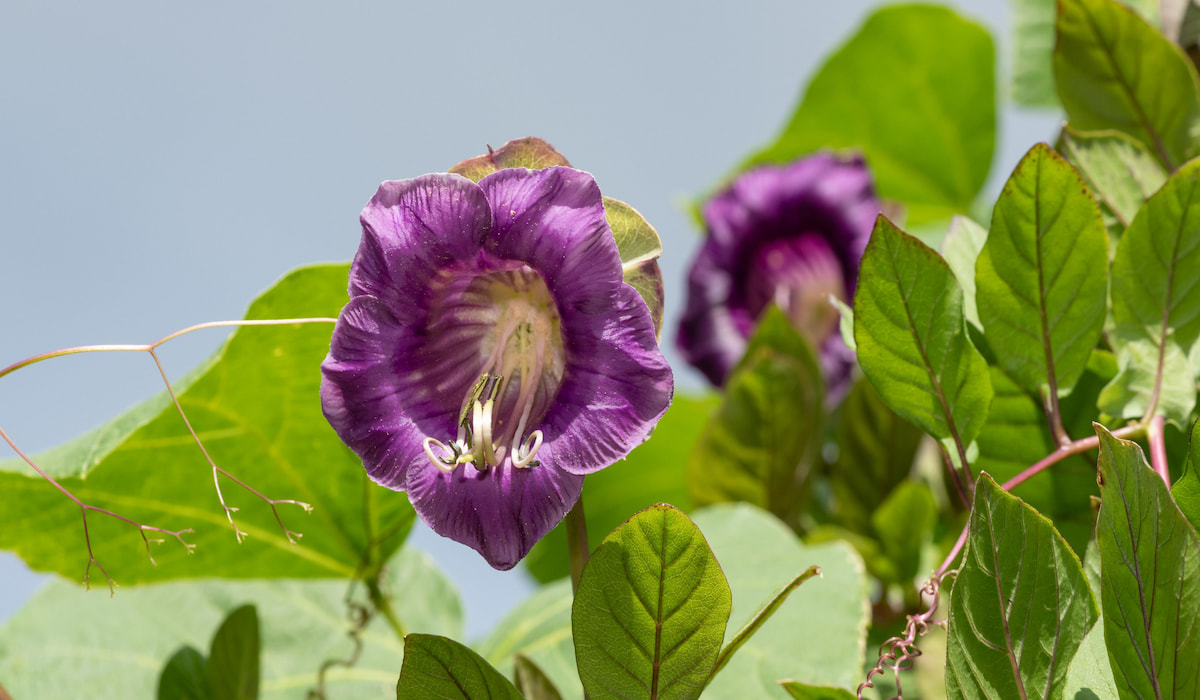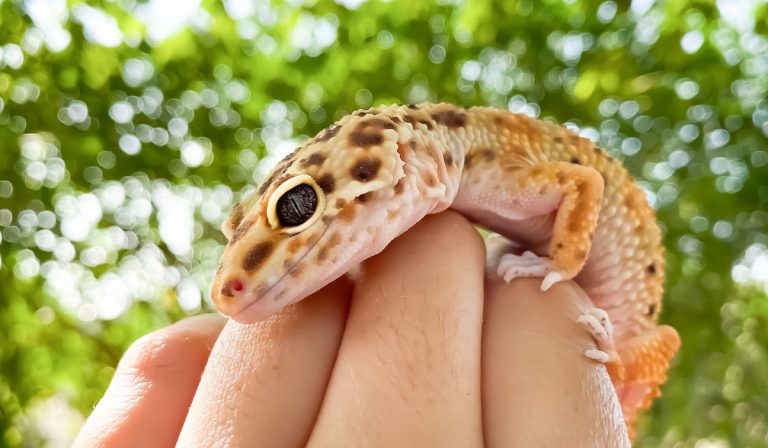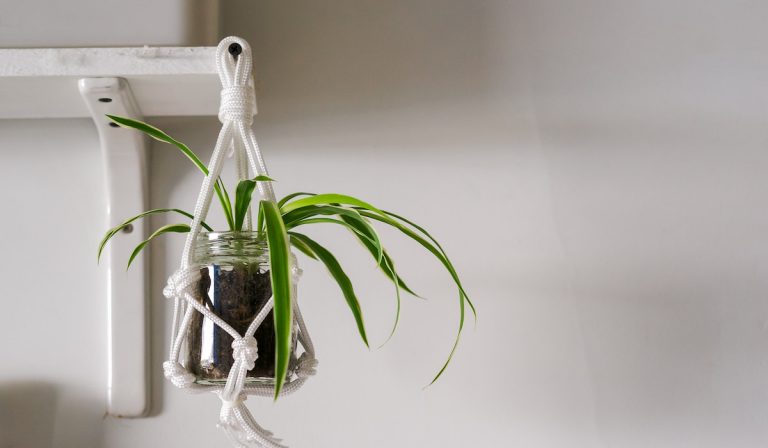13 Beautiful Vine Plants with Purple Flowers
From time to time, everyone likes to change up the look of their property.
When that time comes, you should consider getting vine plants; you will find them beautiful and useful.
Flowering vines add a bit of texture and color to gardens.
They also provide screening and privacy for those building features you want to keep out of sight.
With their lovely blooms and sweet scents, flowering vines can attract their fair share of wildlife, including birds, butterflies, and bees, to your scenery.
You are probably aware of the fact that flowers come in a whole lot of colors.
We could talk about every one of those colors. But that would be more of a book than an article.
So, in this piece, we will focus on 13 beautiful vine plants with purple flowers.
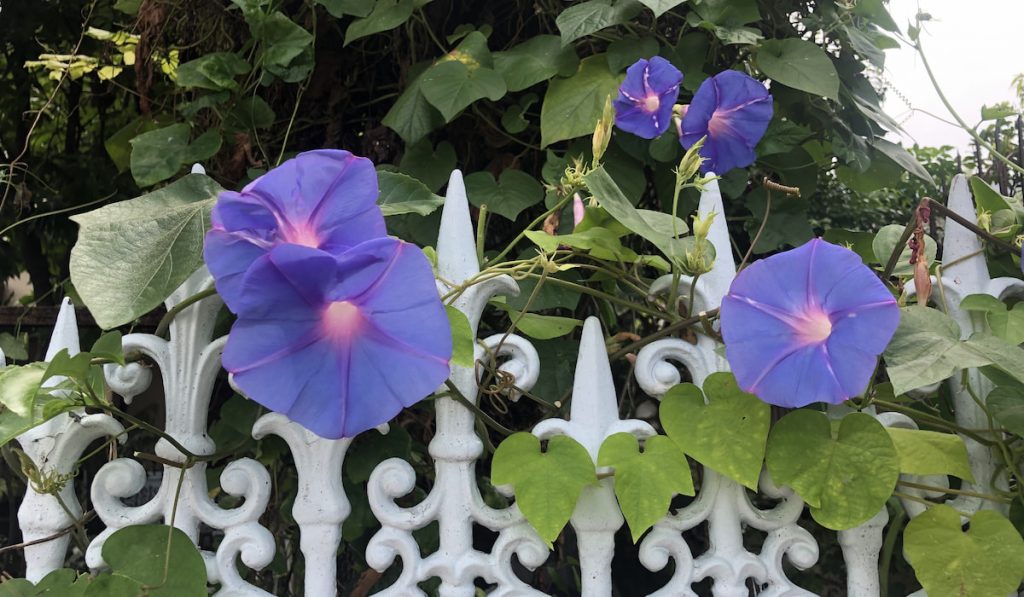
Table of Contents
1. Morning Glory
Morning Glory is a flowering vine that grows along railings and trellises with ease.
It is an annual plant whose flowers bloom in various colors.
Its name comes from its 4-6 inch wide flowers that open in the morning and start closing up by noon.
Morning Glory vines can reach as high as 10 feet.
They thrive in subtropical climates with well-drained and moist soils, and their flowers bloom from summer to fall.
Morning Glory is found in USDA growing zones 2-11.
2. Bougainvillea
Bougainvillea is a flowering vine with dense and woody growth.
Its flowers blossom into a wide range of colors, including purple, orange, red, gold, and pink.
The flowers start blooming during spring and stay until fall.
Bougainvillea vines grow up to 40 feet high and 10 feet wide.
Some Bougainvillea plants grow sharp thorns, so be watchful when moving around them.
Bougainvilleas are annual vines and are found in USDA growing zones 9-11.
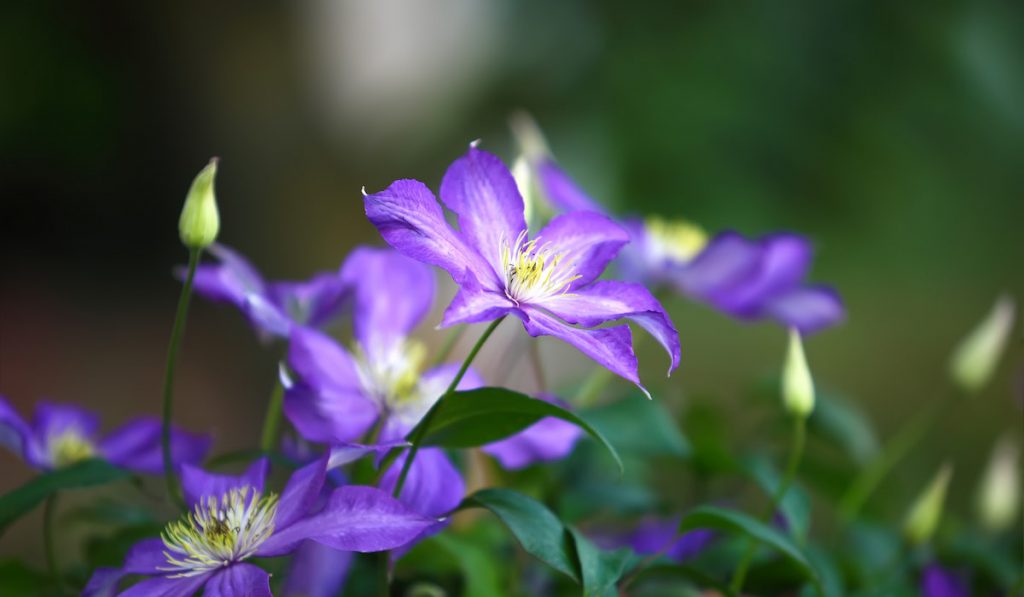
3. Clematis
Clematis is a flowering vine available in an array of shapes and colors.
It grows quickly on mailboxes, arbors, and fences while reaching heights of around 10 feet.
Dwarf varieties of Clematis that grow in containers and grow just 3 feet tall are also available.
Clematis are easy to care for. They require well-drained soil and at least 6 hours of sunlight per day.
Some Clematis bloom on old wood while others bloom on new wood.
Clematis are best pruned in the spring, just after the start of new growth.
They bloom in the summer and are found in USDA growing zones 4-8.
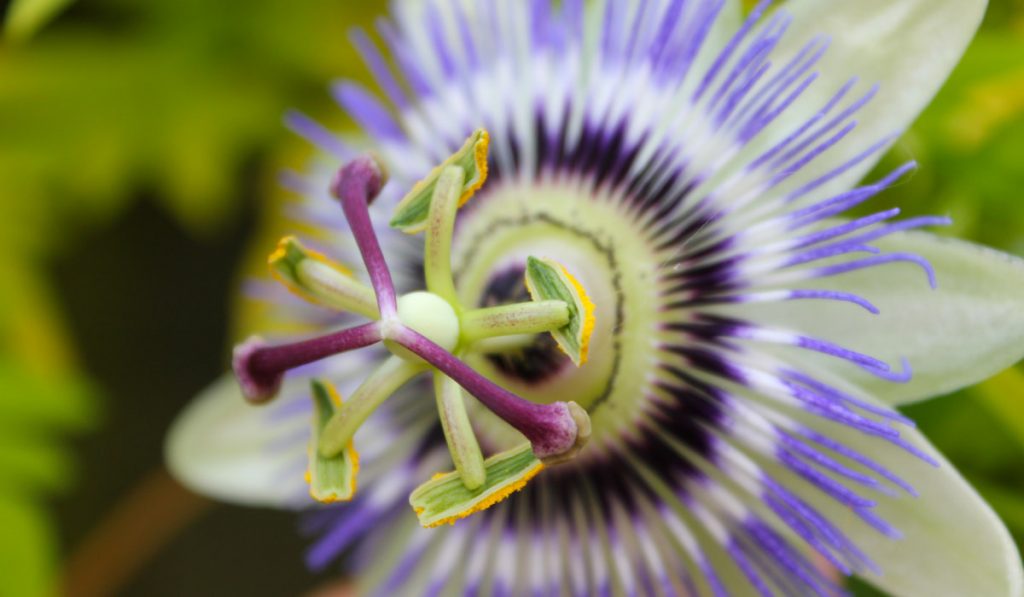
4. Passion Vine
Passion Vines have purple and white flowers with a yellow center and dark purple crown.
They derive an exotic flair from the yellow/pale-green center.
The flowers of Passion Vine are attractive to certain butterfly species.
They bloom in the summer, grow to a height of about 8 feet, and thrive in areas with partial shade and well-drained soil.
Passion Vine is found in USDA growing zones 5-9.
5. Hyacinth Bean Vine
Hyacinth Bean Vine has beautiful purple and green foliage, which is topped with beautiful heads of purple-pink flowers.
The flowers of the Hyacinth Bean Vine bloom from late summer up until fall.
Hyacinth Bean Vines grow toward the sun and provide colorful cover above trellis and arbors.
When they die, large seed heads dangle at the end of each branch.
But be careful because these pods are toxic and have to be cooked thoroughly. You are better off using this vine as an ornament.
Hyacinth Bean Vine thrives in areas with full sun and well-drained soil. It is found in USDA growing zones 10-11.
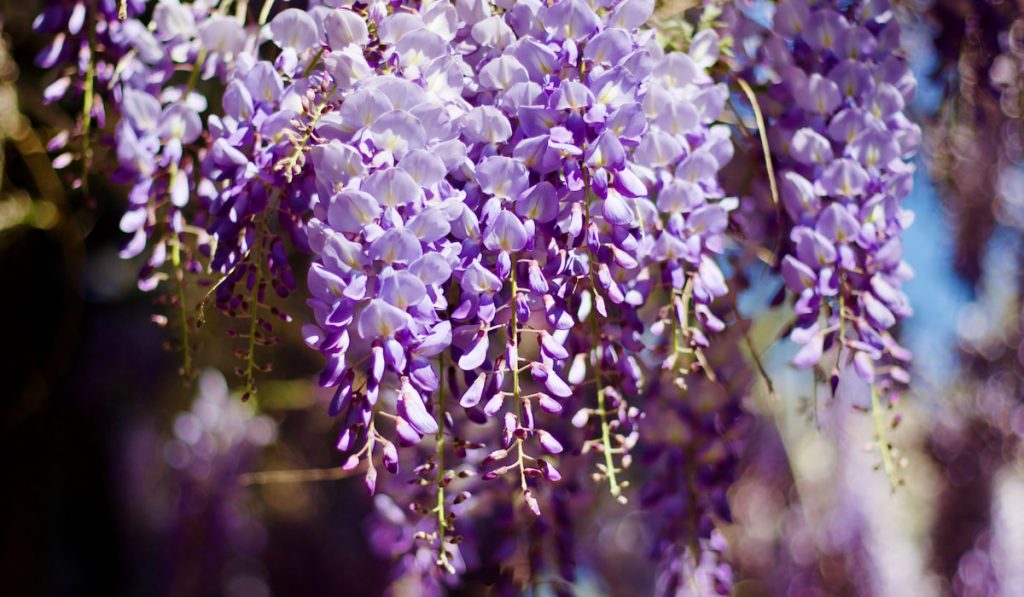
6. Wisteria
Wisteria is a classic vine with purple flowers.
It is an excellent choice for porches, picket fences, pergola, and large arbors.
Wisteria produces clumps of lilac or purple flowers that blossom at the beginning of spring. It also has foliage that turns yellow as autumn approaches.
The foliage of Wisteria is attractive, and it grows up to 30 feet high and wide.
Avoid putting fertilizer on the vines or they grow out of control.
Wisteria thrives in areas with full sun or partial shade.
All in all, it should get no less than 6 hours of sunlight daily.
It also requires well-drained soils and is found in USDA growing zones 5-9.
7. Dutchman’s Pipe
Dutchman’s Pipe is a unique flowing vine whose flowers are shaped like pipes.
The leaves of the Dutchman’s Pipe are quite attractive, with their deep-purple color and heart-like shape.
Dutchman’s Pipe is found in USDA growing zones 8-10.
8. Chocolate Vine
Chocolate Vines are flowing vines whose name comes from their chocolate-like aroma.
They have deep purple flowers and grow up to about 30 feet in height.
Their color variation includes white, brown, and purple.
You can plant them in the fall or spring. When you do plant them, ensure proximity to a structure that will support their growth.
Chocolate Vines prefer areas with full sunlight. But they tolerate shade too.
Chocolate Vines thrive in well-drained, moist sandy-loam soil. They grow in USDA zones 4-9.
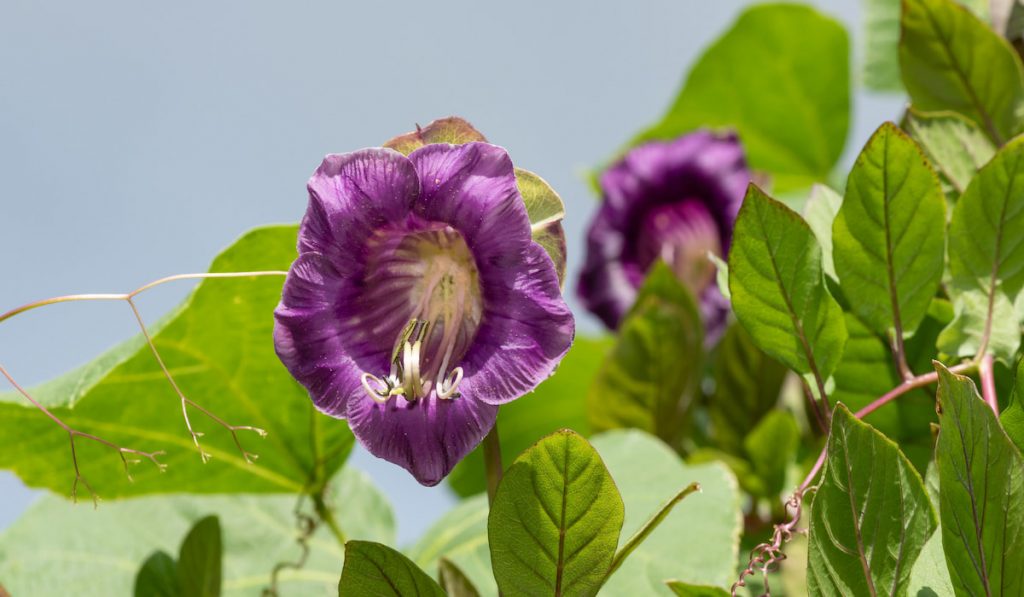
9. Cup and Saucer Vine
Cup and Saucer Vine is a perennial flowering vine.
It is also referred to as cathedral bells vine and is native to Peru and Mexico. Its cup-shaped flowers come in a range of colors, including white and purple.
Its leaves are oblong-shaped with a pale green color.
The flowers of the Cup and Saucer Vine bloom in the summer.
Although flowering is delayed, the leaves of this vine appear quickly. It thrives in areas with full sunlight.
But it can take some shade as long as it gets around 6-8 hours of sunlight per day.
Cup and Saucer vines are typically found in USDA growing zones 9-11.
10. Sweet Pea
Sweet Pea is a fragrant annual flowering vine that sprouts to produce hardy stems and delicate blooms.
It is a perfect choice when planting along an arch or a trellis.
Sweet Pea flowers come in an array of colors. Amongst them are pink, red, blue, and purple.
The flowers on this vine blossom from early to mid-summer.
Sweet Pea performs best when the seeds are planted between late winter and early spring in areas with partial sunlight.
It is found in USDA growing zones 5-9.
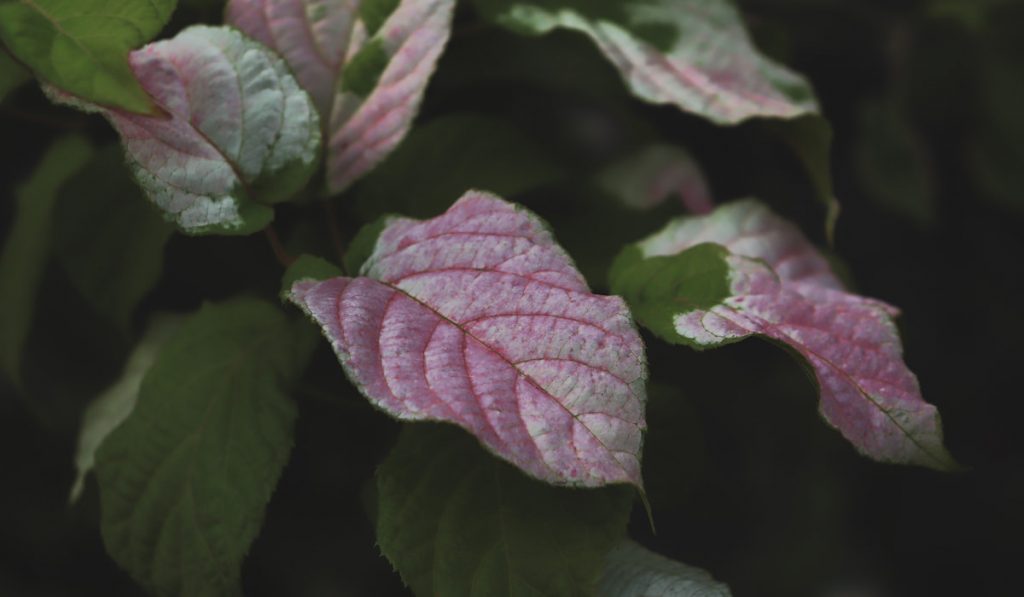
11. Hardy Kiwi Vine (Actinidia kolomikta and Actinidia arguta)
Hardy Kiwi Vine is a relative of the Kiwi Fruit plant, often grown for its peculiar foliage.
While there are many Kiwi species, 2 qualify as hardy: Actinidia kolomikta and Actinidia arguta.
Both species are fruit-producing vines.
The foliage of the Actinidia kolomikta species comes in various colors. Actinidia arguta, on the other hand, is a less robust grower.
A. kolomikta can reach heights of 30 feet or more, while A. arguta does not grow above 20 feet.
The Kiwi Vine produces small flowers with an excellent fragrance similar to Valley lilies.
It has green foliage with pink and purple highlights.
Kiwi Vine requires well-drained soil with medium moisture to thrive.
It also requires exposure to full sun for fruit production and is found in USDA growing zones 3-9.
12. Purple Passionflower (Passiflora incarnata)
Passionflower is a genus with over 400 species, one of which is the Purple Passionflower.
Purple Passionflower (Passiflora incarnata) is also referred to as Maypop.
It is a passionflower species native to the southeastern part of the United States.
This semi-woody flowering vine has large, serrated leaves, which cling to supporting structures with their tendrils.
Purple Passionflowers are known for their exotic and complex-looking flowers.
The flowers come in a range of colors, including red, pink, and white with purple crowns.
The vines grow and can reach heights of 15-20 feet and can produce edible fruit.
Purple Passionflower thrives in well-drained, rich, and moist soil. I
t does well when planted in areas with full sun and can survive for a while in freezing temperatures.
Purple Passionflower is found in USDA growing zones 5-9.
13. Blue Sky Vine
Blue Sky Vine, also known as Bengal clock vine, is a relative of the Black-eyed Susan vine.
The Blue Sky Vine blossoms a large number of big, flashy, cuplike, purplish-blue flowers.
The flowers bloom towards the backend of summer.
The Blue Sky Vine is a fast-growing perennial vine that can reach heights of about 30 feet.
In a single growing season, it can sprout up to 8 feet.
Blue Sky Vine thrives in moist and well-drained soil.
It also does well in areas with partial shade or full sun and is found in USDA growing zones 10-11.
Resources
- https://florgeous.com/vines-with-purple-flowers/
- https://www.hunker.com/13426413/types-of-purple-flowering-vines
- https://www.veranda.com/outdoor-garden/g32115602/flowering-vines/
- https://www.thespruce.com/top-choices-for-vines-and-climbing-plants-1402385
- https://www.bhg.com/gardening/trees-shrubs-vines/vines/flowering-vines/

